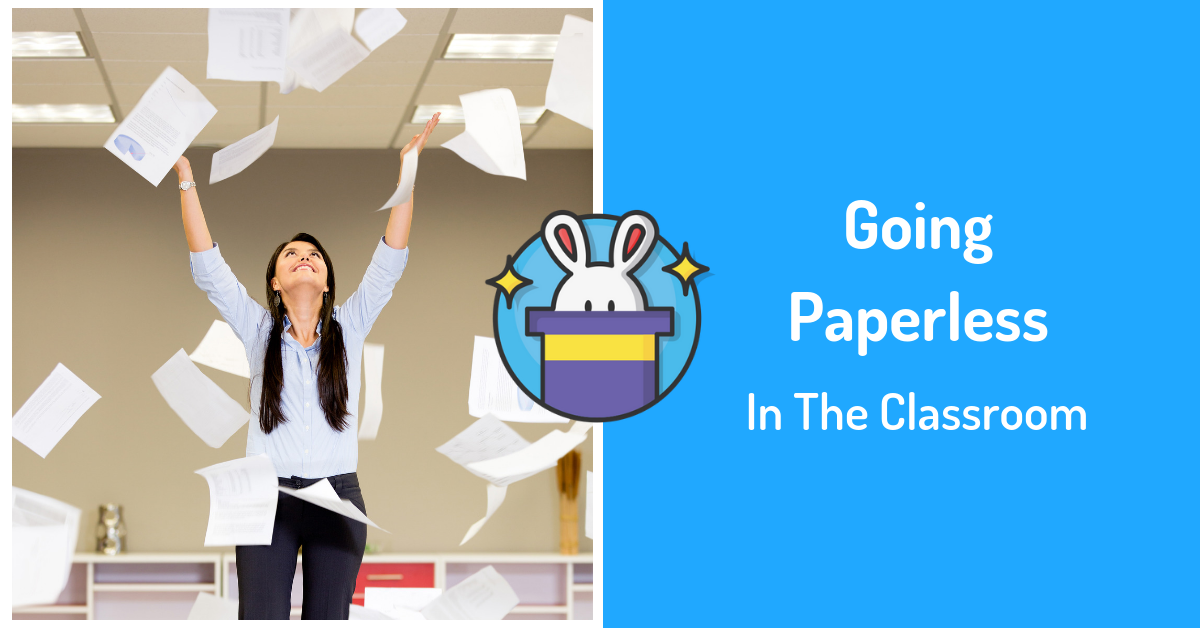

As demographics change, digital communication makes it easier to connect with parents in the language of their choice. How many notes from teachers, requests for volunteers, and other paper-based school communications have ended up crumpled up at the bottom of a school bag and never reached their destination? Sending parent communications digitally significantly improves the chances of the parents actually seeing the communication and responding accordingly. In a paperless school, there’s no risk of an assignment or permission slip or indemnity form going missing – or worse, a stack of ungraded assignments getting lost. When homework is completed digitally, the dog can’t eat it. Aside from making the teacher’s life easier, less paper frees up shelf and cupboard space for other uses and makes for tidier, less cluttered classrooms, creating a more pleasant learning environment. When all assignments are submitted the same way, it’s much more organized than when some students submit printed copies, others email the teacher, and yet others submit (often indecipherable) handwritten assignments. Additional (extra-curricular) resources can also be made available to encourage self-study among curious students. You can also use online student portals to make a variety of learning formats available (such as podcasts and YouTube videos in addition to online quizzes and assignments) to cater to different learning styles and capabilities. Submissions of assignments like essays and research projects can be performed online with ease, so there’s no need to print them out. Even the grading of certain types of tests and assignments can be automated by pre-programming acceptable answers or setting multiple-choice assessments.

With a good digital learning solution, teachers can set assignments and homework online and the system will automatically track whether students have completed their work or not. Instead of paperwork, teachers can spend more time working with their students. In a paperless school, teachers can save a lot of the time formerly spent printing and making photocopies, handing out pages, collecting assignments, and so forth. Going paperless can save school districts upwards of $200,000 per year. Going paperless has a number of benefits for schools, including administrators, teachers, students, and budgets: Save MoneyĪll that paper, printing, and photocopying adds up to a significant expense.
Go paperless how to#
How to Become a Paperless School in 4 Easy Steps.With these issues in mind, in this post we’re going to discuss: Aside from the cost of the paper itself, paper-based processes also require costs like storage, printer ink, photocopier toner, repairs/maintenance, staples, and more. alone is responsible for 30% of global paper usage), all of those papers cost money. Plus, aside from a substantial environmental impact (the U.S. It’s estimated that the average school uses 2,000 pages per day, which quickly adds up to 360,000 pieces of paper over the course of 180 school days.īetween the classroom (handouts, worksheets, tests, homework, report cards, permission slips, etc.) and administration (application forms, student records, newsletters, HR and accounting, etc.), there’s a lot of paperwork to manage and track for administrators, teachers, and students–on top of an already-packed list of responsibilities. Despite incredible advancements in technology in recent years, most K-12 schools still use massive amounts of paper.


 0 kommentar(er)
0 kommentar(er)
